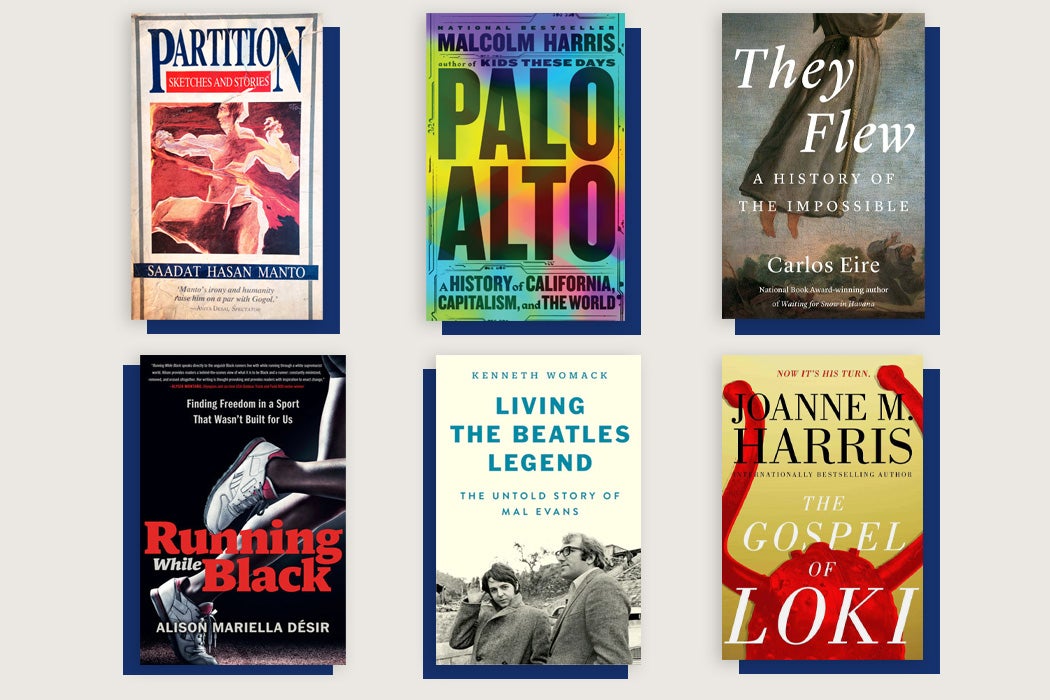Looking for ideas for a last-minute holiday gift? We’ve got you covered! Below you’ll find mini book reports on our favorite books of the year, covering a range of memoirs, biographies, novels, and short stories.
Betsy Golden Kellem
I’ve spent this year writing a book, which means that my usually active pleasure-reading habit has thrown in the towel. Every time I went to my public library to pick up a shiny new hold item, towards which I only had the best of intentions, there was a quiet internal whisper: “You’re going to return this unread in a few weeks, you know that, right?” But last month I went to a book talk by Yale history professor Carlos Eire, whose classes I adored as an undergraduate and whose National Book Award-winning memoir, Waiting for Snow in Havana, is a lush and gutting narrative of childhood escape from Castro’s Cuba. His new scholarly book, They Flew, shares the stories of historic saints who were said to accomplish wild feats like levitation. (Saint Teresa of Avila found her flights occasionally annoying. Joseph of Cupertino was known to perch in trees.) Eire looks at accounts of levitation and similarly mystical feats among historic saints and asks how tales of the impossible can speak to the ongoing dialogue between magic and modernity.
Alex Houston
This year I went Savage—Jon Savage, that is. Between England’s Dreaming: Anarchy, Sex Pistols, Punk Rock, and Beyond, 1966: The Year the Decade Exploded, and This Searing Light, the Sun and Everything Else: Joy Division, I spent more than 1,500 pages with the bloke, and I enjoyed every ringing verbal note. So much, in fact, that I wrote a piece for Daily on Xerox art and punk rock, inspired in part by some of Savage’s insights. Alongside Greil Marcus, Savage is one of very few music critics who successfully synthesizes unapologetic fandom—the affective experience of music—and jargon-free fluency in cultural criticism to, as the scholar Neil Nehring puts it, achieve a “dialectical description of popular music.” A lost art, that, and one I look forward to reading more of with his next, recently announced (ad)venture: The Secret Public: How LGBTQ Resistance Shaped Popular Culture (1955–1979), scheduled for a January 2024 release.
Amelia Soth
“I heard about Noah while sitting on a pew in church, but later, from an old man in our village, I found out what really happened.”
So begins one of the ten Noah tales that are scattered like pearls through Howard Norman’s In Fond Remembrance of Me: A Memoir of Myth and Uncommon Friendship in the Arctic. Told to Norman by Mark Nuqac, an Inuit elder, each tale begins with Noah’s ark pulling up at the shore of a pre-colonial Alaskan Inuit village. From there, they spin out in wildly different directions: Noah insults the entire woolly mammoth species, who decide to flee underground in revenge; Noah’s wife runs off with a local man; a shaman, annoyed by the noise of the ark, turns the animals inside out. Each tale is bizarre, hilarious, and dark retort to the dogmatisms of colonial Christianity.
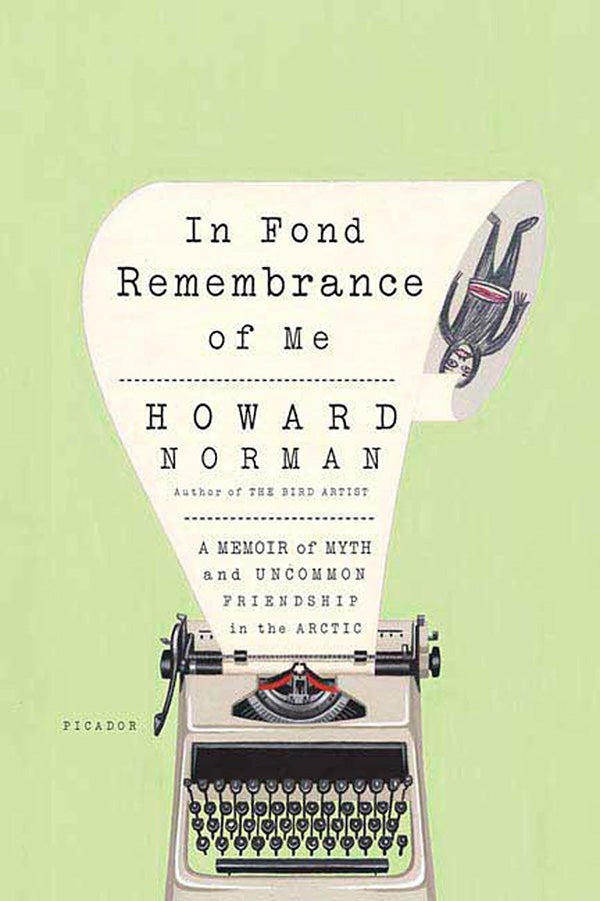
Norman’s memoir weaves around the stories, recounting his experience as a budding folklorist in the Arctic and his deep affection—and, ultimately, grief—for a fellow translator. It’s a beautiful, strange gem of a book, unlike anything else I’ve read. And the Noah stories make stupendous read-alouds—at least, I can’t seem to stop pulling out my copy and subjecting my friends to yet another tale.
Morgan Godvin
Addiction is one of the great issues of the modern age. But just how modern is the phenomenon? In The Urge: A History of Our Addiction, Dr. Carl Erik Fisher delves into countless historical archives, tracing a path from the very first written record of what we would now call “addiction” in a Sanskrit poem all the way through various scourges on society—tea, tobacco, alcohol and drugs—and the sometimes violent way authorities responded. From the first mutual help groups that arose from Indigenous resistance to colonial alcohol all the way through the very unexpected origins of Alcoholics Anonymous, every page will leave your jaw on the floor. Masterfully researched and written, it’s a fascinating insight into not only history but the human psyche itself.
Akanksha Singh
This year, I read Saadat Hasan Manto’s Partition: Sketches and Stories. Like most Indians, the violent stories of how India and Pakistan became two separate countries after the British colonial powers withdrew from the subcontinent were familiar to me. But as the grandchild of a Partition refugee on my grandmother’s side, Manto’s stories in this collection are particularly touching. I can’t think of many authors who are as deft with written vignettes whose brevity etches its way into my brain and being. We’re so focused on narrative arcs nowadays, we don’t give smaller, punchier stories the love they deserve.
One sketch, “Jelly,” bears special mention. In just eighty-one words, we’re reminded that violence isn’t new—nor is our apparent indifference to it.
Liz Tracey
“History is a silent record of people who could not leave, it is a record of those who did not have a choice, you cannot leave when you have nowhere to go and have not the means to go there, you cannot leave when your children cannot get a passport, cannot go when your feet are rooted in the earth and to leave means tearing off your feet.”
Paul Lynch’s Prophet Song has received international acclaim, including the 2023 Booker Prize. The novel is simultaneously an urgent, terrifying warning to its readers about how easily one can wake up in a country that is no longer what you (and your fellow citizens) thought it was and a deeply moving story of a mother’s tragically well-intentioned attempts to keep her children safe and together in an authoritarian state, before and during a civil war. The family’s journeys—geographical, emotional, chronological—are told through moments of mundanity surrounded by incomprehension, fear, rage and grief. Lynch’s prose propels the reader through, achieving a sense of increasing momentum through rhythm and (lack of) punctuation.
The novel can seem too close right now to current events in multiple countries, which may be daunting. However, I would argue that this is exactly the right time to read it and know that some of our fellow humans in the world are living it as you read.
Matthew Wills
Malcom Harris’s Palo Alto: A History of California, Capitalism, and the World has a bold and ambitious title. And it delivers with a critic’s urgency, a scholar’s attention to detail, and more wit than you’d expect from something about “large historical crimes that, once committed, can never truly be set right.” It’s also personal: Harris begins with the abnormally high rates of suicide in his hometown, the capital of Silicon Valley, among the privileged children of the Gilded-in-Silicon Age. They throw themselves on the railroad tracks that made Leland Stanford’s fortune. That fortune founded Stanford University—whose first president may well have had Leland’s widow, Jane Stanford, murdered—the anchor of a century of academic-military-industrial complicity. The book takes in California’s founding genocide; horse-to-human eugenics; segregated suburbs built on nuclear missiles; the domestic American anti-colonial struggle and the long backlash against it (the revenge of Herbert Hoover’s plutocratic-authoritarian vision); and today’s tech “libertarians” funding fascism as they gleefully disembowel America and feast on the guts. Palo Alto is a NorCal companion to Mike Davis’s classic City of Quartz: Excavating the Future of Los Angeles. The geographical (and what else?) end of America produces some astonishing historical analysis.
Noor Anand Chawla
This year I read Abraham Verghese’s The Covenant of Water, a family saga set in Kerala, south India, from the early 1900s to the 1970s. The book follows the lives of three generations of a family grappling with a strange malady—a child’s death by drowning in every generation. The book is well-written, draws the reader in, and has a number of beautifully etched characters with nuanced storylines. Leaning on his own medical background, Verghese describes detailed medical procedures while exploring the birth of institutionalized medical services in a changing Indian landscape, just before and after the country attained independence from British rule. The disease of leprosy in particular is examined at great length—both as a medical phenomenon and as the cause of deep-set social stigma.
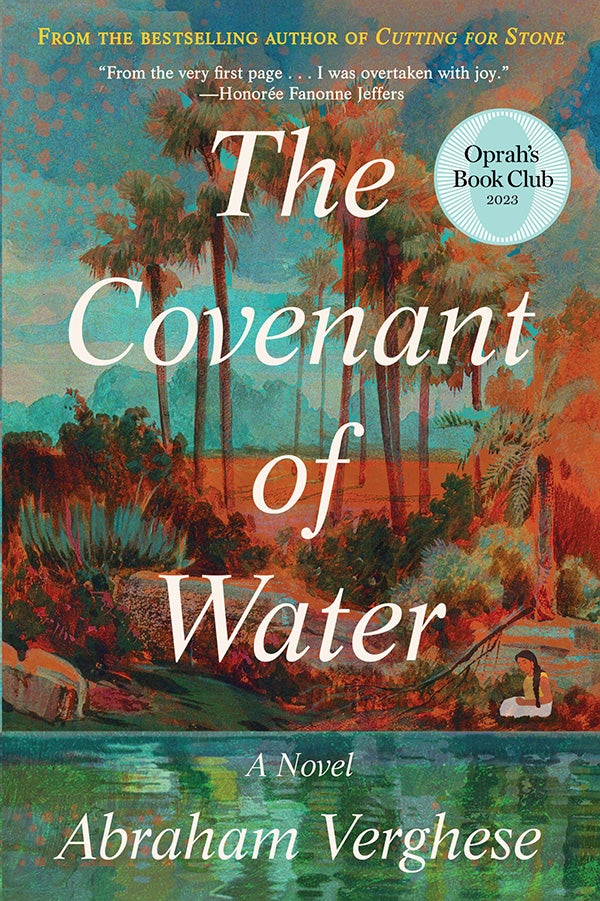
Delightful descriptions of the coastal countryside of Kerala further enhance the writing. Despite its enormous length and tendency to digress from time to time, the book is captivating and informative. I highly recommend it as a good starting point for those keen on experimenting with Indian fiction.
Emily R. Zarevich
I wasn’t aware at first that the author of Chocolat, Joanne M. Harris, did a character study of Loki long before Marvel released the first episode of their TV show in 2021. So adaptable and chameleon-like is the author’s talent and approach to different subjects that my brain didn’t make the connection until I read the bio at the back of the book. “Oh, it’s her!” And what a treat!
In 2014, Harris published The Gospel of Loki, and in 2023, it became one of my favorite books of the year the instant I finished reading Loki’s cheeky introduction, in which he warns the reader that he’s not the most likeable guy, but by the gods (among which he counts himself a member), he’s going to tell his side of the story. So shut up and listen.
Harris’s first-person fantasy novel retells the juicy highlights of Norse mythology from the point of view of a cunning trickster who is at turns endearingly charming and pathetically needy and woe-is-me. Loki’s wits wiggle Asgard out of absolutely wild disasters and cause just as many. He’s Asgard’s number one secret weapon, not Thor’s legendary hammer, and its greatest danger. He’s never content, he’s literally the embodiment of chaos. It’s utterly fascinating, and Harris does marvelous things with this character. This Loki is a puzzle. Readers might never work out why he acts the way he does, and that’s where the novel has its magnetic pull. In the unpredictability of a complete menace. That is Loki. Harris gets it.
Sara Ivry
The difficulty in describing precisely what makes Jonathan Rosen’s The Best Minds: A Story of Friendship, Madness, and the Tragedy of Good Intentions a riveting, brilliant read lies in its breadth. Purportedly a memoir, it tells more than a one history, principally Rosen’s own alongside that of his childhood friend and classmate, Michael Laudor. The boys are neighbors in New Rochelle, a largely Jewish New York City suburb, growing up in the ’70s in households that esteem erudition and that are, to various extents, haunted by specters of the Holocaust; Rosen’s father fled Vienna as a child. High achievers and sometimes rivals, both go to Yale where their paths diverge more explicitly. After graduation, Laudor’s working as a consultant when he’s diagnosed with paranoid schizophrenia. Into the account of this unraveling, Rosen weaves in an illuminating and damning critique of how law and public policy vis-à-vis mental health and institutionalization have failed to serve the people they’re intended to help. Rosen writes with tremendous compassion and sensitivity about his friend and about his own ambivalence regarding the ups and downs of their decades-long relationship. His candor and eloquence are compelling; his empathy boundless.
May Wang
As with my TV shows, I’m usually working on five or six books at any given time to suit my many different reading moods. This year, I’ve been making my way through David Mitchell’s Cloud Atlas for the first time, having previously enjoyed his Ten Thousand Summers of Jacob De Zoet. Mitchell’s novels offer nuanced portraits of colonization and industry, particularly how empire and capitalism intersect in East Asia. Nearly twenty years after it was first published, Cloud Atlas remains surprisingly prescient about ambition, consumerism, and capitalism across the ages. As someone who adores giving gifts, I have particularly been thinking about Mitchell’s depictions of a utopian/dystopian “corpocracy,” where a society of golden-arch worshippers is upheld by a bioengineered underclass promised “ascension” after requisite years in fast-food service.
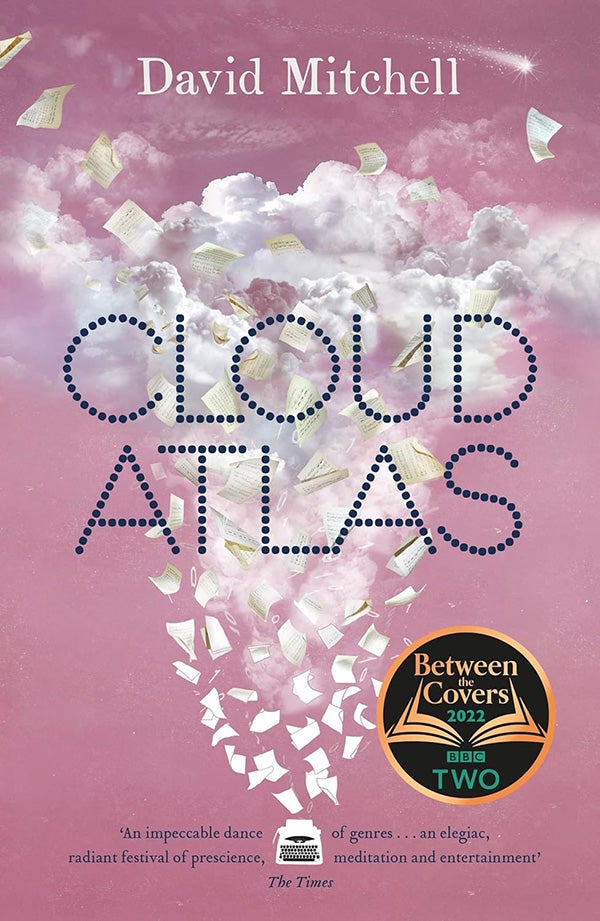
Contemporary fiction seems to be playing around with the traditional narrative forms and dissolving the edges of reality, such as Hervé Le Tellier’s L’Anomalie or Emily St. John Mandel’s Sea of Tranquility, and Cloud Atlas has been interesting counterpoint to these more recent puzzle-box novels of concentric or cyclical narratives. In a 2016 article in Criticism, John Shanahan links Cloud Atlas with the digital age, along with Emerson and other American transcendentalists and post-secularism, arguing that the novel produces “a form of theodicy for the internet age.” For other such considerations, see Ken Liu’s short story collection The Paper Menagerie, which includes whip-smart and haunting stories on the promises and dangers of technology like “The Man Who Ended History: A Documentary” and “The Regular.”
Catherine Halley
There are more books that I meant to read this year than books I actually read. Something happened to me, I’m ashamed to admit, and my attention has been sucked away from books. Perhaps it’s ironic, then, that one book I did read and recommend to all lovers of books and bookstores is Jeff Deutsch’s In Praise of Good Bookstores. Jeff is the director of the Seminary Coop Bookstore in Chicago, which he and his colleagues recently transformed into a nonprofit. It’s a radical idea: to admit that selling books is not a profitable business, that bookstores have many other valuable functions, to create community, to inspire love, to slow us down. Deutsch says, “The good bookstore fosters the expenditure of a certain kind of time: the slow time of the browse.” Which is exactly what we recommend you do here at JSTOR Daily.
S. N. Johnson-Roehr
This has been a remarkable year in publishing for women’s running. The first half of 2023 saw the release of three engaging memoirs from elite runners: Lauren Fleshman’s Good for a Girl: A Woman Running in a Man’s World (winner of the 2023 William Hill Sports Book of the Year Award); Kara Goucher’s The Longest Race: Inside the Secret World of Abuse, Doping, and Deception on Nike’s Elite Running Team; and Des Linden’s Choosing to Run. Fleshman, Goucher, and Linden are roughly the same age, and reading their different views and experiences of the same events in the (troubled and troubling) world of professional running was illuminating. Each of these books got a second read from me, but my favorite book by a female runner this year is Alison Mariella Désir’s Running While Black: Finding Freedom in a Sport That Wasn’t Built for Us.
There’s a pervasive belief in non-elite running that it’s a simple sport to break into, an easy way to get exercise. Anybody can run! All you need is a decent pair of shoes, low-chafe shorts and shirt, and a good sports bra. But Désir destroys that myth—repeatedly. When she began long-distance running, she couldn’t help but notice that she was the only Black person in a crowd of white runners. Why, if anybody can run, was whiteness the norm, even in New York City? Why, if anybody can run, was Ahmaud Arbery murdered while taking an afternoon run? Désir interrogates the race-based assumptions and biases that shape the sport, interweaving the larger history of running in the US with her own story as a daughter of immigrants and a new runner. This extraordinary book is just one small part of the conversations about race and gender that need to be happening in the running world today.
Maria Papadouris
This year posed a reckoning with reality for me that has manifested in both my lived and literary experiences. Nausea by Jean-Paul Sartre serves as a remarkable representation of feeling both isolated from and over-encumbered by circumstance. Rooted in the existentialist philosophy of Sartre himself, the novel meanders between thought and observation through the lens of a twentieth-century man devoted to his research. A “nausea” comes over him during the winter of 1932, detaching him from activities he once enjoyed. Lacking zeal around the people he passes his time with and perceiving his surroundings as surreal, this dread presents itself physically.
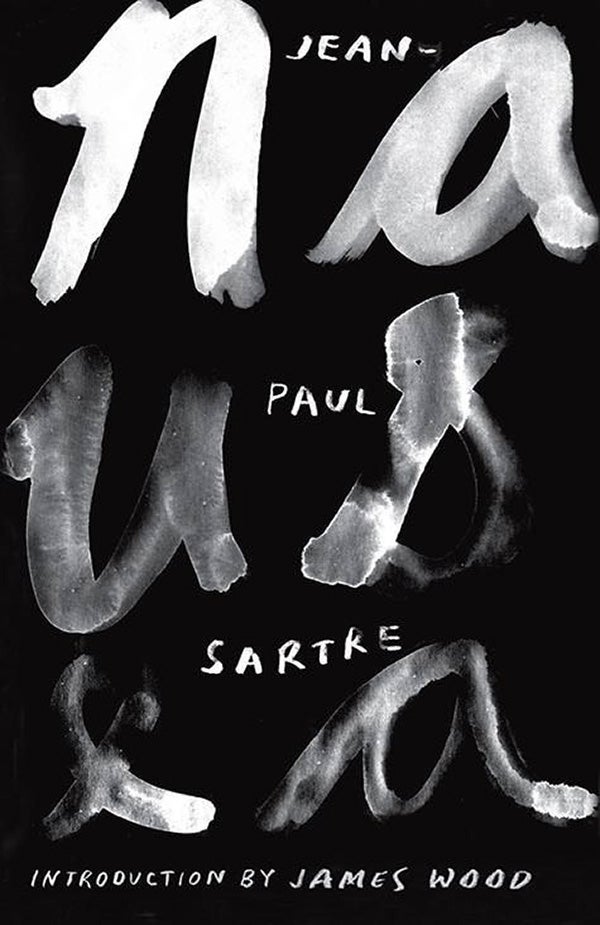
To supplement the novel, I enjoyed “Exile and Existentialism,” a chapter from Henri R. Paucker’s Exile: The Writer’s Experience. The chapter discusses, among other things, the theme of a crisis of reason and the problem of infinite possibilities straining one’s singular reality—exploring how these ideas have emerged in works created while their authors were in exile. If any book could convince me to finally (and voluntarily) pack my bags and disappear so that I may finally write something worthwhile, it would be this one.
Katrina Gulliver
This year I’ve read several books about cults. Maria Bamford’s memoir Sure, I’ll Join Your Cult is a very personal (and hilarious) account of her attraction to various groups, the psychological techniques some of them used, and the appeal of belonging. (She also uses “cult” very liberally, with her first cult being her family). In a similar vein, Emily Lynn Paulson’s Hey, Hun is a memoir from the other side, a confessional from a woman who was part of multilevel marketing group, using pressure tactics to lure in future participants. Following on the theme, I turned to Amanda Martel’s Cultish, which discusses the way “cult” is itself a very ambiguous term (most of us would agree that Jonestown was a cult, but we also use the term to talk about popular beauty products and friends getting really into Crossfit).
Quite how we define a “cult” has been part of academic discussion for decades (see Geoffrey K. Nelson’s 1969 argument for a “redefinition,” Colin Campbell’s 1977 “clarification,” and Joseph Laycocks 2013 analysis of religious innovation); one person’s cult is another’s new religious movement. But what they all share is the methods to attract and control followers, following the same road map of human emotions.
H.M.A. Leow
Y-Dang Troeung’s Refugee Lifeworlds: The Afterlife of the Cold War in Cambodia is one of the most powerful books that I’ve read this year. Retracing her parents’ life in wartime Cambodia, her own birth in the Khao-I-Dang refugee camp, and her upbringing in Canada, Troeung blends historical and literary analysis and personal and family memories with a remarkable depth of clarity and compassion. Her aim, she writes, is “to enact a shift in the way that we approach the question of trauma.” By looking at spaces that can exist between life and death, the book explores key concepts such as “refugee aphasia” and “minor anecdoting,” and revisits themes of silence, speechlessness, and storytelling among survivors.
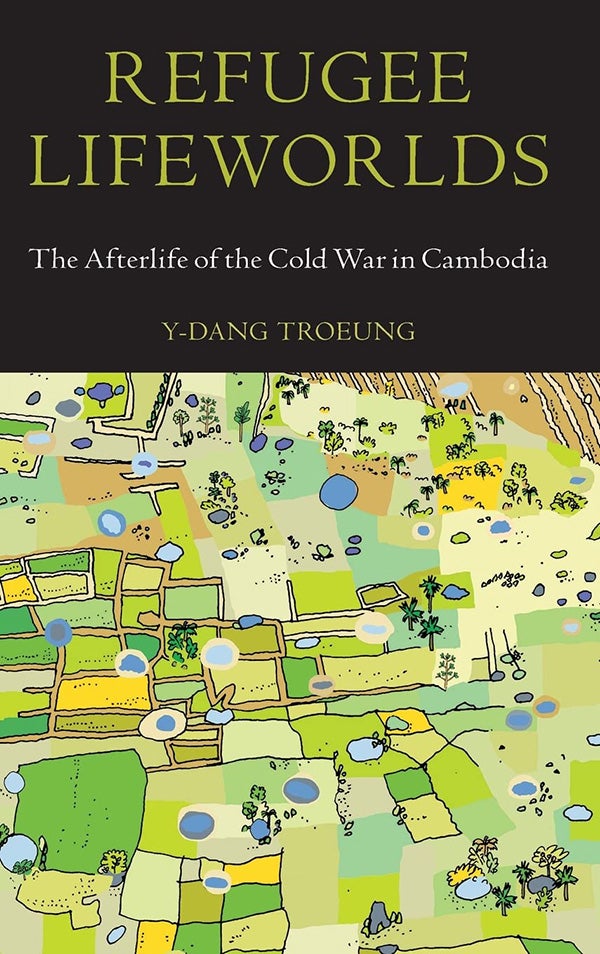
As a scholar of both critical refugee studies and critical disability studies, Troeung extends iconic works such as Jasbir Puar’s The Right to Maim: Debility, Capacity, Disability and Refugee Lifeworlds is a much-needed addition to a canon of scholarship on the Cambodian diasporic experience, which already includes Cathy Schlund-Vials’s War, Genocide, and Justice: Cambodian American Memory Work and Khatharya Um’s From the Land of Shadows: War, Revolution, and the Making of the Cambodian Diaspora. Through her unflinching attention to Southeast Asian refugee lives, Troeung, who died of cancer last year just months after the book’s publication, delivers an urgent vision of how “the refugee can embody vital knowledges and resources that will usher in paradigms of planetary humanity.”
Rob Crossan
Two very unusual music biographies have emerged this year about two individuals who, although ostensibly fringe figures, have life stories that deserve closer scrutiny. Richard Morton Jack’s biography, Nick Drake: The Life, is the definitive, final word on one of the most mysterious figures in twentieth-century music. Drake took his own life at the age of just twenty-six in 1974, after years of mental health illness that erupted during the making of the three short, exquisitely beautiful albums he made for Island Records. Nick rarely played live, there’s no film footage of him in existence, and he only gave one interview in his lifetime. Jack peels back Drake’s inner life and obviates many of the myths that have grown up around one of the least understood musicians England has ever produced.
Ken Womack’s Living the Beatles Legend: The Untold Story of Mal Evans looks like the results of a barrel being scraped to within an inch of its life. Do we really need a lengthy biography of the roadie for the Fab Four? Well, it turns out to be the most significant work about the Beatles for many years. Mal Evans was one of only a half-dozen-strong circle of genuine insiders to the twentieth-century’s ultimate cultural phenomenon, and Womack does a superb job of collating the best of his diaries. Evans’s violent death at the hands of the LAPD in 1976 is an eerie harbinger of Lennon’s murder, and Womack’s sensitivity, fused with an understanding of the need for unflinching truth, is expertly woven into the narrative.
In fiction, there’s nothing I’ve read this year with the power of Penance by Eliza Clark. Telling the story of a sixteen-year-old girl who was kidnapped, tortured, and murdered in a northern seaside town, the book reads in the brisk style of Norman Mailer’s non-fiction explorations. But the seaside town doesn’t exist. Nor does the murder victim. Nor does the journalist who investigates the mystery. In a media landscape so saturated with real-life, true-crime stories, it seems, at first, redundant for there to be a fictional tale such as this. But the story unravels in a manner so gripping, disturbing, and so utterly true to the lived experience of being a working-class teenager today that, far from an indulgence, this is a work that feels both revelatory and profoundly necessary.
Danielle Han
My favorite genre of all time is satire. And in a year where we constantly found ourselves struggling to draw a sharp line between irony and reality, 2023 was the perfect year to enjoy Time Shelter. Though the book came out in 2020 and was translated into English in 2022, Time Shelter wasn’t on my radar until it (rightfully) won an international Booker Prize award. Georgi Gospodinov, the first Bulgarian to win the award, shared its accolades with translator Angela Rodel. To both of their credit, the book is clearly lithographed with a subtle detachment from the English language—making it obviously translated, but holding a rare sort of clarity. Whether this read counts as satire—or, for that matter, funny—is up for debate. At times, the book leans into that resigned sort-of banter that invokes a dystopian world a touch too close to reality. But at others, it’s a refreshing doom-stressing commentary on what happens when fear and memory are toyed with—and mixed into power.
Editor’s Note: This story was amended to correct a typo in the Refugee Lifeworlds review.
